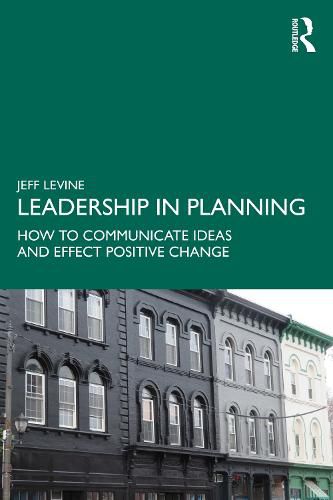Readings Newsletter
Become a Readings Member to make your shopping experience even easier.
Sign in or sign up for free!
You’re not far away from qualifying for FREE standard shipping within Australia
You’ve qualified for FREE standard shipping within Australia
The cart is loading…






Being an effective city planner means being an effective leader. You need to be prepared to convince people that good planning matters. Often a well-written, thoughtful and inclusive plan doesn’t result in meaningful action, because planners don’t show leadership skills. At some point, some city planners become cynical and worn down, wondering why no one listens to them but not doing the self-reflection about how that could change.
Leadership in Planning explains how to get support for planning initiatives so they don’t just fade from memory. It will guide city planners to think less about organizational charts and more about:
* being a respected voice within your organization, both with staff and with your boss;
* being a good communicator with people outside your organization; and
* being able to understand how and when to push for good planning ideas to turn them into actions.
Along the way, case studies bring these concepts to the real world of municipal planning. In addition, past planning figures’ actions are explored to see what they did right and what mistakes they made.
$9.00 standard shipping within Australia
FREE standard shipping within Australia for orders over $100.00
Express & International shipping calculated at checkout
Being an effective city planner means being an effective leader. You need to be prepared to convince people that good planning matters. Often a well-written, thoughtful and inclusive plan doesn’t result in meaningful action, because planners don’t show leadership skills. At some point, some city planners become cynical and worn down, wondering why no one listens to them but not doing the self-reflection about how that could change.
Leadership in Planning explains how to get support for planning initiatives so they don’t just fade from memory. It will guide city planners to think less about organizational charts and more about:
* being a respected voice within your organization, both with staff and with your boss;
* being a good communicator with people outside your organization; and
* being able to understand how and when to push for good planning ideas to turn them into actions.
Along the way, case studies bring these concepts to the real world of municipal planning. In addition, past planning figures’ actions are explored to see what they did right and what mistakes they made.